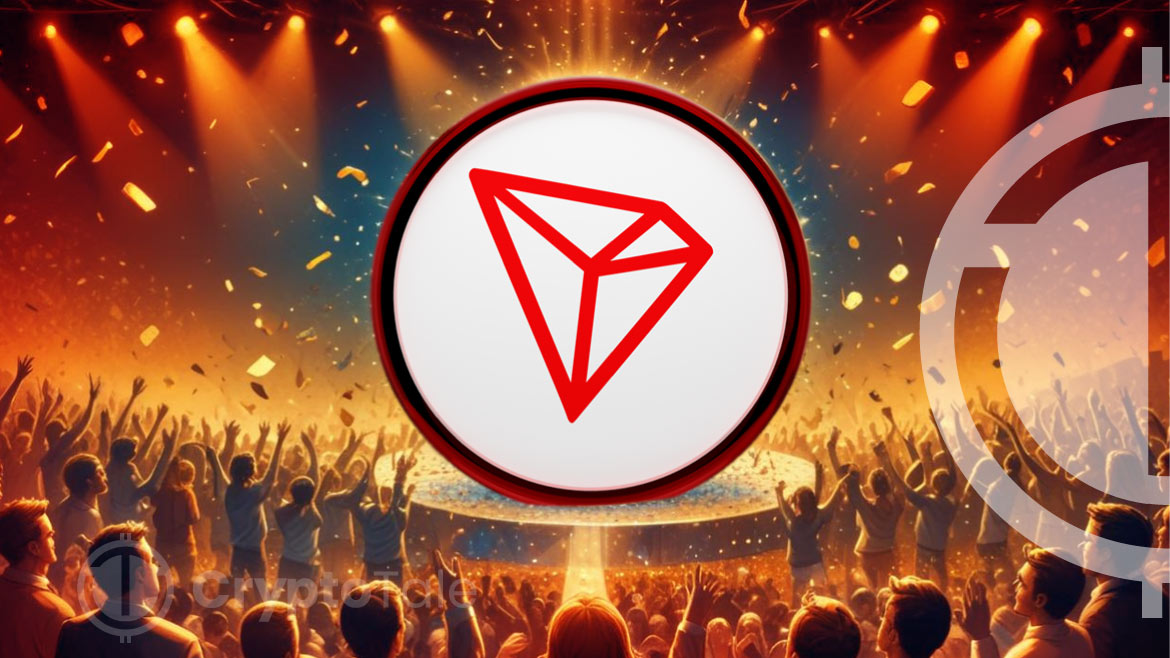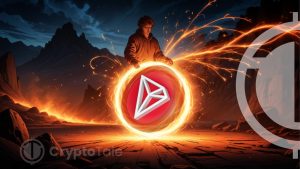
Imagine a world where content creators reclaim their control over their creations and transactions happen instantly. All of this is possible with the help of TRON, a blockchain platform that’s changing the rules of the internet. TRON is a major blockchain platform with the mission to revolutionize content distribution. This article will give you a detailed review on TRON.
What is TRON?
TRON is a decentralized platform launched in 2017 for content distribution and application hosting. It is considered to be one of the fastest-growing public chains, with more than 160 million registered users and over 5 billion transactions. The platform’s native token is TRX, and it can process 2,000 transactions per second. TRON has its own run-time environment called TRON Virtual Machine (TVM), which is used to run smart contracts. It offers high scalability and low transaction fees, making it an attractive option for developers and users.
TRON utilizes a consensus mechanism called Delegated Proof of Stake (DPoS), which is an evolved form of PoS aimed at improving scalability and efficiency. DPoS allows TRON to achieve greater transaction speeds and lower energy consumption by electing a limited number of super representatives to validate transactions.
History of TRON
TRON was established in 2014, but Justin Sun, CEO of the Tron Foundation, launched the blockchain only in 2017. It raised $70 million during its Initial Coin Offering (ICO), and the foundation was established in Singapore to oversee the network’s development. Initially, TRX tokens were on the Ethereum blockchain, but in 2018, TRON developed its own mainnet and migrated the tokens to its own blockchain. In order to achieve the goal of giving ownership rights back to content creators, TRON acquired a peer-to-peer file-sharing company called BitTorrent.
In 2019, TRON developed and introduced a new token called BitTorrent token (BTT) to incentivize file sharing on the BitTorrent network. Furthermore, it launched TVM to allow developers to create and deploy smart contracts on the network.
Will Bitcoin Break Through $59,200 Resistance This Weekend? Analysts Weigh InHow Does TRON Work?
Architecture Layers
TRON’s architecture consists of three layers, and they are:
- Storage Layer: This layer handles the storage and retrieval of various types of data while ensuring flexibility and scalability. TRON uses a distributed storage protocol for better efficiency.
- Core Layer: This is where the DPoS mechanism governs how transactions are validated and added to the blockchain. Furthermore, the account management feature handles user identity, permissions, and security protocols. The core layer also takes care of the deployment, execution, and management of smart contracts.
- Application Layer: It serves as the interface between the TRON blockchain and the end-users and is responsible for running the dApps that users interact with. It provides a platform where developers can build and deploy a variety of applications using smart contracts.
Consensus Mechanism
TRON uses the DPoS consensus mechanism, where token holders vote for super representatives (SRs), who are responsible for validating transactions, producing blocks, and making governance decisions. There are 27 SRs responsible for transaction validation, and they are rewarded with TRX.
SRs are chosen based on voting, and token holders can vote for SR candidates through the staking of TRX tokens. Each token represents one vote, and a single voter can vote for multiple candidates, and the top 27 with the highest votes will become SRs. Once the 27 SRs are selected, they take turns producing blocks, and new blocks are added to the blockchain every three seconds. In the event that an SR is incapable of producing a block within the allocated time, the next SR in line will take over the process, ensuring blocks are produced continuously.
For every block added to the network, 32 TRX are added to the blockchain, and these tokens are distributed as rewards to the SRs. The SRs also share a portion of the rewards to the holders who voted for them. Furthermore, any changes to the protocol or new features need to be approved by the majority of the SRs.
Unlocking Ethereum’s Path: Can It Break the $3,000 Barrier?What Sets TRON Apart?
- High Throughput and Scalability: Unlike Bitcoin and Ethereum, where the number of transactions per second is around 7 and 12-30, the TRON blockchain offers high throughput by processing 2,000 TPS.
- Low Transaction Costs: The gas fees on TRON are low, making it a cost-effective blockchain for both developers and users.
- TRON Virtual Machine (TVM): TVM is compatible with EVM, allowing developers who are familiar with Ethereum’s ecosystem to port their smart contracts to the TRON blockchain.
- DPoS Consensus Mechanism: TRON uses the Delegated Proof of Stake mechanism to validate transactions. This mechanism allows for faster block times and higher scalability due to the small number of nodes used in transaction validation.
- Integration of BitTorrent: The buying of BitTorrent was a strategic move by TRON as it helped bring millions of users to the ecosystem to leverage decentralized file-sharing capabilities.
Conclusion
Since its launch in 2017, TRON has established itself as a major blockchain platform with a rapidly growing user base and impressive transaction throughput. Through its Delegated Proof of Stake (DPoS) consensus mechanism, TRON achieves high scalability and low transaction fees, making it attractive for developers and users alike. The TRON Virtual Machine (TVM) enhances its compatibility with Ethereum, facilitating easier migration of smart contracts. Moreover, the strategic acquisition of BitTorrent underscores TRON’s commitment to decentralizing content sharing and expanding its ecosystem.













